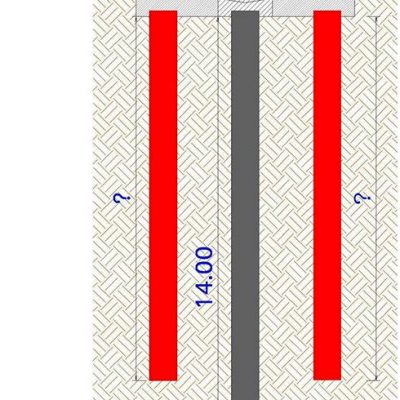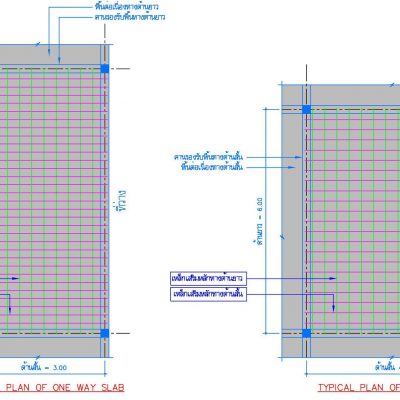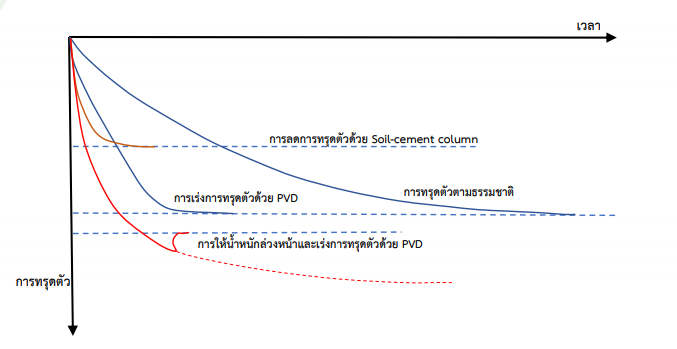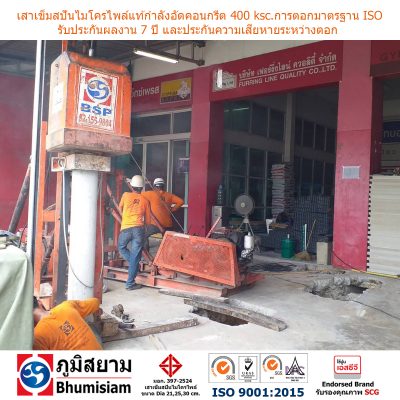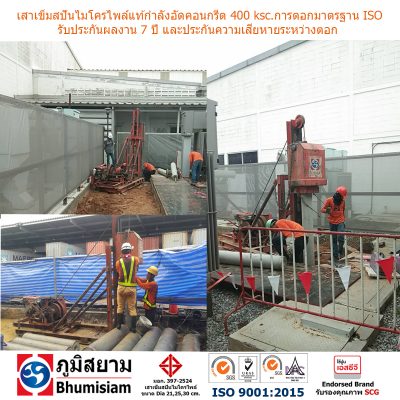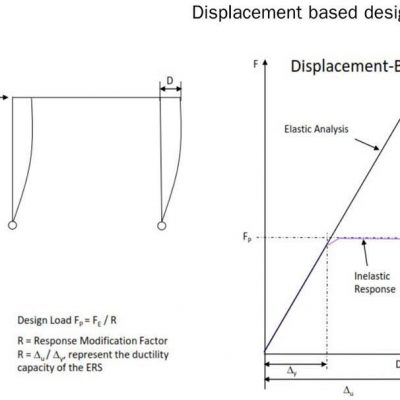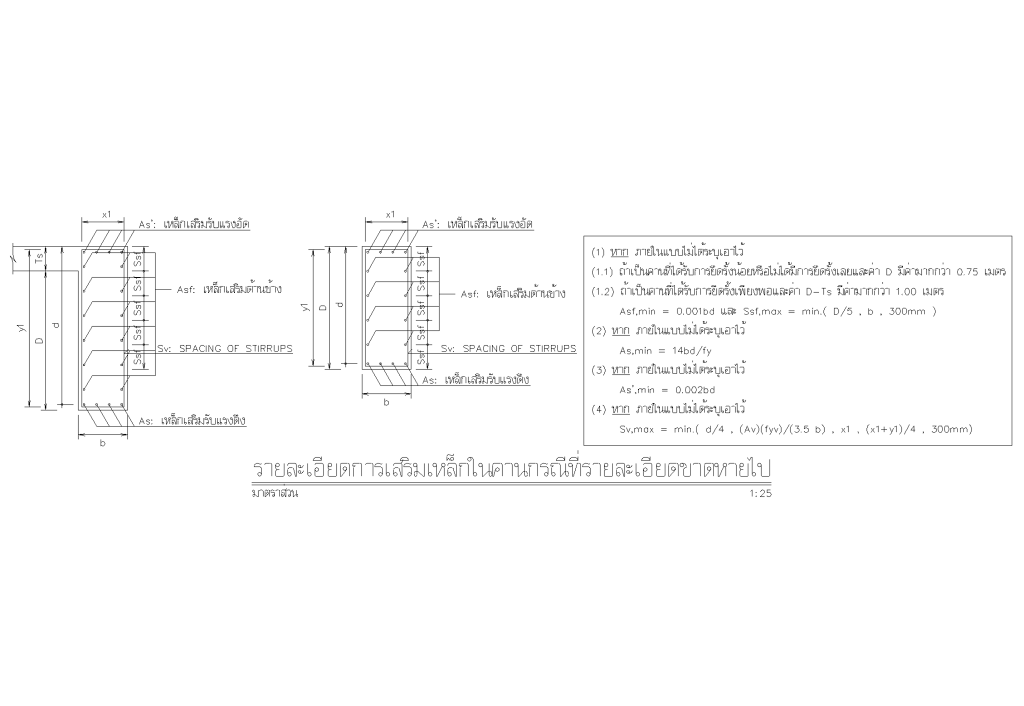
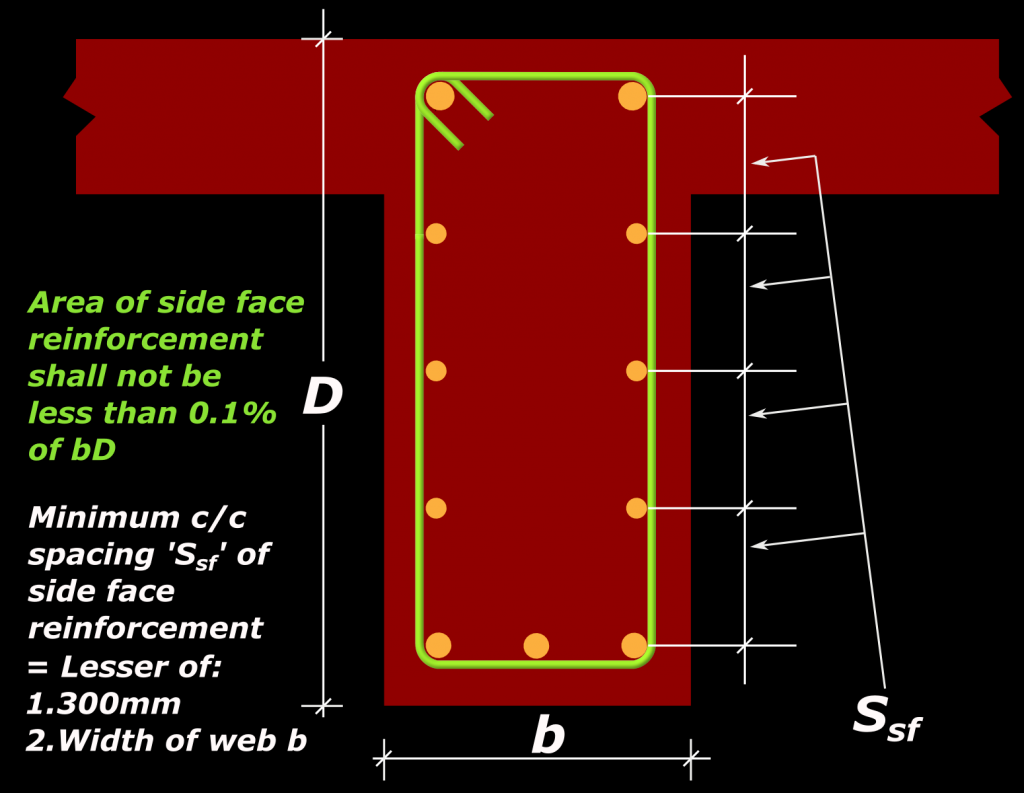
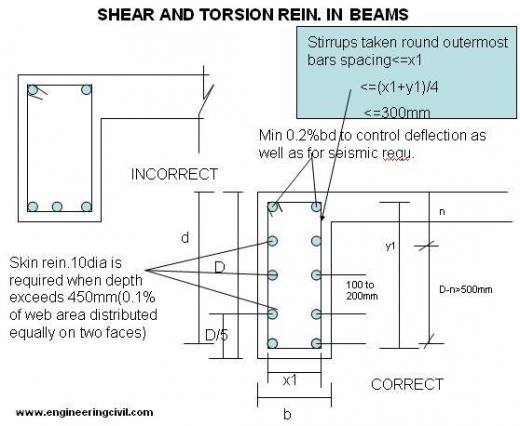
ref: https://www.facebook.com/bhumisiam/posts/1309091279136994
สวัสดีครับแฟนเพจที่รักทุกๆ ท่านครับ
วันนี้ผมจะมาตอบคำถามยอดฮิตคำถามหนึ่งที่ผมมักได้รับตลอดช่วงเวลาหลายปีที่ผ่านมา ก็คือเรื่อง การเสริมเหล็กทางด้านข้างของคาน หรือ ที่เราเรียกว่า SIDE FACE REINFORCEMENTS หรือบางครั้ง WEB REINFORCEMENT นั่นเองครับ
หากเราต้องทำการออกแบบคานที่มีขนาดค่อนข้างที่จะลึกๆ แต่ก็ไม่ถึงกับเข้าข่ายเป็นคานลึก (DEEP BEAM) เรามักจะเห็นว่าวิศวกรออกแบบหลายๆ ท่านอาจจะใส่เหล็กเสริมทางด้านข้างของคาน แต่พอถามก็มักไม่ได้คำตอบที่แน่ชัด หรือ บางครั้งคำตอบที่ได้ก็เป็นเพียงคอนเซ็ปต์ว่าใส่เพื่อป้องกันการแตกร้าวเนื่องจากความลึกของคานมีค่ามาก แต่สำหรับผมแล้วตอบแบบนี้ก็ยังถือว่าดีกว่าคนที่เสริมเหล็กเหล่านี้เข้าไปโดยไม่มีเหตุลใดๆ ที่แน่ชัดน่ะครับ
ตอนที่ผมเป็นวิศวกรออกแบบมือใหม่ผมเองก็ไม่ทราบเช่นกันนะครับ แต่โชคดีว่าด้วยความที่เป็นคนไฝ่รู้ไฝ่เรียนจึงได้หาคำตอบเรื่อยมาจนได้พบกับคำตอบซึ่งจะมีระบุอยู่ใน BS CODE
ก่อนอื่นเลยนะครับ ผมต้องขอออกตัวก่อนนะครับว่าการเสริมเหล็กแบบนี้ไม่ได้มีการกล่าวถึงใน CODE มาตรฐานฝั่งอเมริกันอย่าง ACI มากนัก โดยหากจะอ่านใน ACI จะต้องไปหาอ่านเอาในเรื่อง CRACK CONTROL ซึ่งการนำมาใช้งานของผมก็ต้องอ้างอิงจากมาตรฐานฝั่งอังกฤษอย่าง เช่น BS8110-1:1997 3.12.11.2.6 และ BS8110-1:1997 3.12.5.4 เป็นต้น ซึ่งจะมีกล่าวถึงเรื่องๆ นี้เป็นพิเศษ
ผมอนุมานเอาว่าคงเป็นเพราะว่าเนื่องจากเหตุผลของการใส่เหล็กเสริมตัวนี้ก็เพื่อป้องกันการแตกร้าวเนื่องจากอุณหภูมิ ซึ่งแต่ละประเทศจะมีสภาพภูมิอากาศในแต่ละประเทศนั้นจะมีความรุนแรงแตกต่างกันมาก ซึ่งปัญหาในบ้านเรามักจะเจอปัญหาเรื่องนี้น้อย ซึ่งโดยมากจะเจอกรณีที่ต้องออกแบบเพื่อให้เผชิญกับสภาพแวดล้อมที่มีความวิกฤติทางด้านสารเคมีเป็นหลัก ดังนั้นวิศวกรที่ต้องทำงานทางด้าน ONSHORE และ OFFSHORE มักจะมีความรู้ที่เกี่ยวข้องกับการออกแบบในเรื่องๆ นี้
ไว้วันพรู่งนี้ผมจะมาอธิบายเกี่ยวกับ STANDARD DRAWING (ดูรูปที่ 1) ในแบบของผมเมื่อจำเป็นต้องทำงานออกแบบที่เกี่ยวข้องกับงานจำพวก PLANT งาน ONSHORE และงาน OFFSHORE
ผมยังได้นำ ตย มาให้เพื่อนๆ ได้ดูด้วยนะครับ (ดูรูปที่ 2 และ 3) รูปเหล่านี้จะเป็นรูปที่ที่หาได้ทั่วไปทางอินเตอร์เน็ตเมื่อเรา SEARCH หาคำว่า SIDE REINFORCEMENT ยังไงเพื่อนๆ อดใจรอวันพรู่งนี้นะครับผม แล้วผมจะมาแชร์ความรู้เรื่องนี้แก่เพื่อนๆ ต่อ แล้วพบกันวันพรู่งนี้นะครัช !!!
Today I shall answer one of the most frequently asked questions from my colleagues during the past years of my design life. That is the side reinforcements or sometimes called as web reinforcements in beam.
Normally when we design a beam that consist of an amount of depth, but not categorize in a deep type of beam. We mostly see design engineers reinforced these steels into the section without knowing the exact reason, or sometimes the answer is just only a given concept which for me I think it is better than having no reasons in reinforcing these steels without knowing anything about it at all.
When I started my design career I also suffered the same problem, but luckily I finally found the answers through these questions from the BS code.
First of all I have to admit that these reinforcements were not mentioned clearly in the American code like ACI, because if you want to read these topics you have to look deeply in the crack control topic. Which from my work I refer to the British side like BS code i.e. BS8110-1:1997 3.12.11.2.6 and BS8110-1:1997 3.12.5.4 etc. which will especially express this topic in a more interesting way.
I personally assumed that the reason of why these reinforcements are placed in the beams is because it is used to resist the cracks due to the severe temperature which in each country will consist of these different type of temperature conditions. In Thailand we rarely met this problem, but we normally find it critical for the chemical exposure case. Hence, it is quite normal for engineers who must deal with onshore, and offshore work will be familiar with these reinforcements.
Tomorrow I shall continue explaining about this topic and my standard drawings (see figure 1) when I get involved in design plants, onshore, and offshore work.
I also show you some examples of these reinforcements (see figure 2 and 3) These are typical figures that you can find in the internet when you search for the word side reinforcements. So you guys better wait until tomorrow because I intend to share my knowledge about this reinforcements with you more. See ya tomorrow folks !!!
หวังว่าความรู้เล็กๆ น้อยๆ ที่ผมได้นำมาฝากพี่แขก และ เพื่อนๆ ทุกๆ ท่านในวันนี้จะมีประโยชน์ต่อทุกๆ ท่านไม่มากก็น้อย และ จนกว่าจะพบกันใหม่นะครับ
ADMIN JAMES DEAN
BSP-Bhumisiam
เสาเข็ม สปันไมโครไพล์ ช่วยแก้ปัญหาได้เพราะ
1) สามารถทำงานในที่แคบได้
2) ไม่ก่อให้เกิดมลภาวะทางเสียง
3) หน้างานสะอาด ไม่มีดินโคลน
4) สามารถรับน้ำหนักได้ 20-40 ตัน/ต้น
5) สามารถตอกชิดผนังกำแพง ไม่ทำให้โครงสร้างเดิมเสียหาย
สนใจติดต่อสินค้า เสาเข็ม ไมโครไพล์ (Micropile) สปันไมโครไพล์ (Spun MicroPile) มาตรฐาน มอก. ของ ภูมิสยาม ซัพพลาย ติดต่อ สายด่วน โทร 081-634-6586





